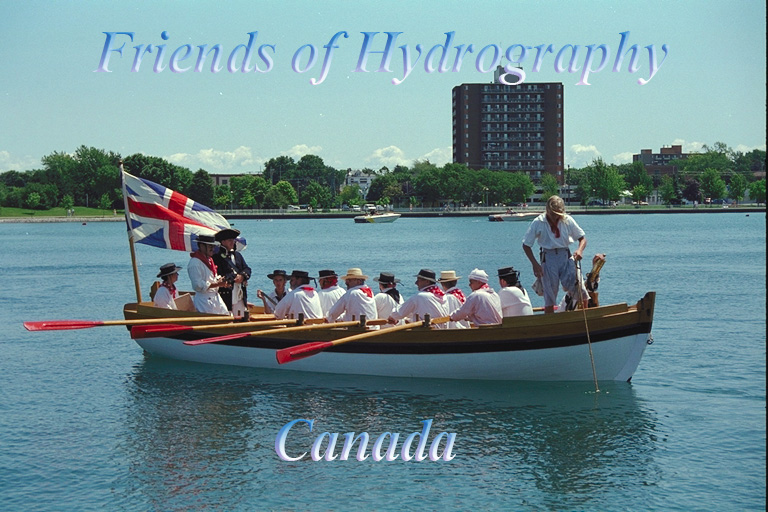Wm J. Stewart
THE SHIP
Stewart's death while still in harness was keenly felt at CHS , and the next ship to be built, and first in almost twenty years, was named after him. Canadian Government Ship Wm. J. Stewart was built in Collingwood, Ontario at a cost of $1 million. The Willie J. as she was more affectionately called, was 228 feet (69.5 m) long, 35 feet (10.6 m) beam and was 1295 tons gross. Her size was close to the maximum allowable to pass through the canals and locks along the St. Lawrence River. She was designed for oilfired boilers which were changed to coal to satisfy local coal mining interests on the BC coast but the boilers were converted to oil firing in 1958 after the mines closed. The steam ran triple expansion engines connected to twin-screws. After commissioning, she travelled by way of the Great Lakes and St. Lawrence River, and the Panama Canal to arrive at Victoria, British Columbia in July 1932. She proved not to be an outstanding sea-boat, and many a seaman travelled by the rail in a quartering sea.
Because she was specifically designed for hydrographic surveying, she carried a large crew (56) to man four launches and had a large chartroom - the seagoing office for the ten hydrographers -directly under the bridge. According to the standards of the 1930s, the hydrographers' cabins were spacious but crews quarters were only adequate. In 1948, there was a 300% crew turnover in six months, which may also have been affected by the availability of good paying jobs ashore. Quarters were improved but were never spacious.
She was not commandeered by the Navy during hostilities as were her Atlantic Coast sisters, but assisted the Navy by surveying small harbours, deploying nets and testing equipment. During 1938-40, CHS tested, using the Stewart, Radio Acoustic Ranging where the crew of the ship at sea would explode a bomb in the water at a location they wanted positioned. The acoustic signal was picked up by hydrophones on three separated buoys moored near shore and relayed back to the ship by radio. From the travel-times the position could be computed. The CHS tests were not successful, although the tests done by the Americans, apparently, were. The project got abandoned due to the war, the loss of the US-trained operator to the war effort, but the final death-knell was the post-war use of radio signals such as Decca and Loran-A for positioning.
The Stewart came close to an untimely end on June 11, 19 44 when she hit the notorious Ripple Rock in Seymour Narrows, at the narrowest constriction of the waters between Vancouver Island and the mainland. [See Ritchie, As it Was, Hydro International, Vol. XX, No. YY] While the stokers rushed to put out the boiler fires, the Captain and mates piloted the ship aground three miles away in Plumper Bay. She was salvaged and towed to Victoria for repairs. She was ready again for the 1945 field season. She lasted through the 1975 field season then was mothballed for four years looking for a buyer. She is now the Canadian Princess, a floating hotel and fishing resort at Ucluelet, British Columbia - Canada's mini-version of the Queen Mary at Long Beach, California.
The ship has been remembered in geographic names along the Canada's Pacific Coast. To cite a few examples: - Weinberg Inlet (Jake -, the chief officer), Anderson Passage (John -, quartermaster), Langthorne Island (William -, oiler), Rutley Islands (John -, hydrographer), and Stewart Passage after the ship herself.
SOURCES
Gray, David H., Geographical Naming Practices of William J. Stewart, Canoma, Vol. 14, No. 2, December 1988. Reprinted in Lighthouse, Edition 40, Fall 1989. Miller, Al, Surveying with Radio and Acoustics, Lighthouse, Edition 43, Spring 1991. Meehan, O.M. The History of the Canadian Hydrographic Service from the Time of its Inception in 1883 to the End of the Second World War, Unpublished Manuscript, Marine Science Branch, EMR , Ottawa, 1967.
Sandilands, R.W., Charlie Golf Foxtrot Quebec, Lighthouse, Edition 20, November 1979.
Sandilands, R.W., The Canadian Princess, Lighthouse, Edition 22, November 1980.
http://www.canadianprincess.com/history.htm accessed 15 July 2003.

